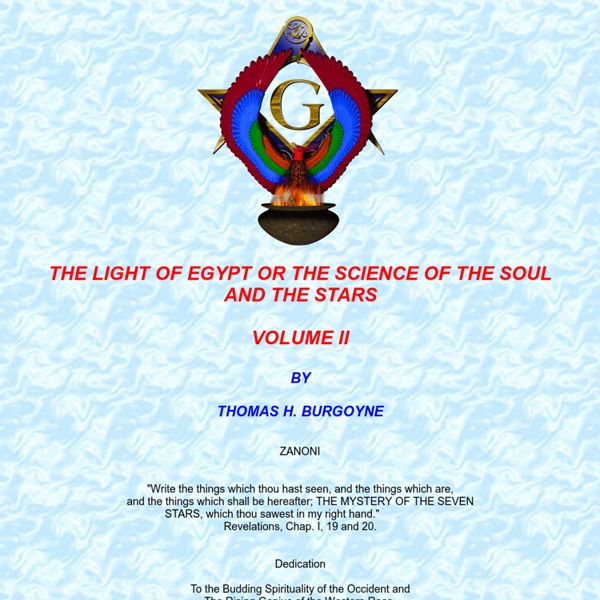The Key of Solomon (Clavicula Salomonis) edited by S. Liddell MacGregor Mathers
For a reprint of Mathers' edition, see listing at Amazon.com INTRODUCTION by Joseph H. Peterson. The Key of Solomon is the most famous and important of all Grimoires, or handbooks of Magic. As A.E. Waite has stated (BCM, pg. 58) "At the head of all, and, within certain limits, the inspiration and the source of all, stands the Key of Solomon. ...
Scrying
Scrying (also called seeing or peeping) is the practice of looking into a translucent ball or other material with the belief that things can be seen, such as spiritual visions, and less often for purposes of divination or fortune-telling. The most common media used are reflective, translucent, or luminescent substances such as crystals, stones, glass, mirrors, water, fire, or smoke. Scrying has been used in many cultures in the belief that it can divine the past, present, or future.
Psychosurgery - children, therapy, person, people, used, brain, skills, theory, health
Photo by: ktsdesign Definition Psychosurgery is the treatment of a psychiatric disorder using surgical techniques to destroy brain tissue and is now rarely used. Purpose It is a last-resort treatment for extreme, debilitating, psychiatric disorders.
Ma'at, Goddess of Truth, Balance, Order
Ma'at, Symbol of Order Ma'at, Goddess of Truth, Balance, Order... Ma'at, unlike Hathor and Nephthys, seemed to be more of a concept than an actual goddess. Her name, literally, meant 'truth' in Egyptian. She was truth, order, balance and justice personified. She was harmony, she was what was right, she was what things should be.
Studies in Occultism by H. P. Blavatsky, from Lucifer magazine
Theosophical University Press Online Edition Studies in Occultism By H. P.
Ouroboros - Fullmetal Alchemist Wiki - Wikia
Ouroboros refers to the ancient mystical symbol representing a dragon devouring its own tail. It represents the eternal cycle of life and death. The circular affinity suggests the eternal cycle of life death or death and birth that happens to each life born. The head of the dragon represents life, while the tail as it is being bitten represents the end of life, the circular motion shows the perpetual cycle of life and death as the dragon consumes its tail. All of the seven main Homunculi in the Fullmetal Alchemist series are presumed to have the mark located somewhere upon their person as if tattooed there, save for Pride in the manga and 2009 anime.
Devil
The Devil (from Greek: διάβολος or diábolos = slanderer or accuser)[1] is believed in many religions, myths and cultures to be a supernatural entity that is the personification of evil and the enemy of God and humankind. The nature of the role varies greatly, ranging from being an effective opposite force to the creator god, locked in an eons long struggle for human souls on what may seem even terms (to the point of dualistic ditheism/bitheism), to being a comical figure of fun or an abstract aspect of the individual human condition. While mainstream Judaism contains no overt concept of a devil, Christianity and Islam have variously regarded the Devil as a rebellious fallen angel that tempts humans to sin, if not commit evil deeds himself. In these religions – particularly during periods of division or external threat – the Devil has assumed more of a dualistic status commonly associated with heretics, infidels, and other unbelievers. Etymology
Elliot Valenstein on the history of the lobotomy
Better Living Through Lobotomy: What can the history of psychosurgery tell us about medicine today? An Interview with Elliot Valenstein By Allison Xantha Miller | Issue #21 In the mid-1930s, the eminent Portuguese neurologist Egas Moniz, nearing the end of his career, was anxious to secure his reputation in the annals of science.
The Shaft, The Subway & The Causeway - Plan Of the 'Tomb Of Osiris'
This graphic of the shafts and chambers under the causeway is taken from the FOX TV Special "Opening The Lost Tombs" which was transmitted on the 2nd of March 1999. It has been compiled from a number of video frame captures. It must be immediately pointed out that this graphic does not show the true layout under the causeway.
The Tao Te Ching Explained In Depth
The Tao Te Ching, also known as the Dao De Jing, is an ancient attempt to point us toward our true nature written by the Chinese Sage, Lao Tzu, in 6th century B.C. Dao De Jing is best translated as "the Way and it's Power". The Dao cannot be revealed or explained adequately in words and yet this beautiful poem was made in an attempt to do so. The Dao along with the Zhuangzi, is a fundamental text for both religious and philosophical Daoism. Many Chinese artists, poets, painters, calligraphers and even gardeners have used the writings as a source of inspiration. The text itself is short, containing only around 5,000 Chinese characters within 81 brief chapters or sections.
theomagica - On Crossing the Abyss
The experience of Crossing the Abyss is triggered by a liminal rite and results in a series of liminal experiences in our everyday lives. It describes nothing other than the actual process of crossing the Abyss, i.e. the passing over the visionary threshold that lies between creation and divinity - as well as hopefully a safe return of the practitioner into creation. The term is not specific to a particular rite or tradition of magic but describes an underlying pattern of human existence: When we cross from creation to divinity we are stripped bare of all created forms that we hold as part of our own being: our body, our ego, our memories, our mind, etc.



